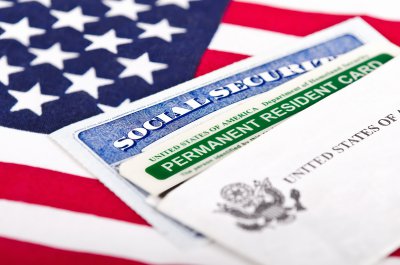
The new presidential proclamation on the suspension of immigrant entries is confusing. The acknowledgement that immigration adversely affects job opportunities for the most vulnerable American workers, and that continuing at the current pace will inhibit the national recovery from the pandemic shutdown, is welcome. But this action does nothing to curtail immigration; it appears actually to re-start entries for select categories that were paused indefinitely when the State Department shut down most visa adjudications on March 20. Even more concerning, it prioritizes the entry of the most scandal-ridden category of immigrants of all — EB-5 — in which foreigners essentially can purchase green cards for their families for as little as $900,000.
Here's what the proclamation says: "The entry into the United States of aliens as immigrants is hereby suspended and limited subject to section 2 of this proclamation."
Section 2 says "The suspension and limitation on entry pursuant to section 1 of this proclamation shall apply only to aliens who:"
(i) are outside the United States on the effective date of this proclamation [Note: At least half of all green cards are issued to aliens already living in the United States, and this order does not apply to them.];
(ii) do not have an immigrant visa [or other travel document] that is valid on the effective date of this proclamation;
In other words, it suspends the entry of people who don't even have an immigrant visa yet.
In fact, as noted above, the State Department, wisely, already suspended the adjudication of immigrant and most non-immigrant visas on March 20.
Next, the president's order lists a number of important exceptions to this "suspension". These include:
- Green card holders.
- Medical workers and researchers applying for immigrant visas, and their families. It is not clear if these applicants can now bypass the long waiting list for family and employment green cards, or if this applies only to those applicants whose turn has arrived. I suspect the former.
- Applicants in the aforementioned, extremely controversial, EB-5 program, which is a pet category of Jared Kushner, who leads the White House immigration reform team. For more on this program, see the Center's extensive archive of EB-5 research by my colleague David North.
- Spouses, children, and prospective adoptees of U.S. citizens.
- Relatives of members of the military.
- Afghans and Iraqis who have worked for the U.S. government.
- Any other alien whose entry is determined to be in the national interest.
All of these applicants now can have their immigrant visas processed and enter the United States (assuming they can travel here).
On the bright side, the adjudication of other categories is still paused. Suspended categories include the chain migration categories of parents and extended family, the diversity visa lottery, most employment applicants from abroad, spouses and children of green card holders, and a few others. These categories number approximately 25,000 immigrant visa applicants per month. If the suspension lasts for 60 days, this will represent a pause of about 50,000 applicants from abroad, or about 5 percent of annual immigration.
Most of the applicants in these categories, with the exception of the diversity visa lottery, parents, and the highest caliber employment applicants, have already waited many years on the waiting list, so an additional wait of two months is not especially significant.
However well intentioned, this executive order will provide little relief to Americans. The pause applies to only a few immigrants who represent a tiny fraction (about 5 percent) of total annual admissions, and will actually re-start admissions that have been paused, well before this health crisis is over, and well before the employment crisis is over.
We recommend that the president take much bolder steps to help U.S. workers. For example, he should direct the Department of Labor and USCIS to review the labor certifications of thousands of pending employment-based green cards in order to ensure that the employer requests are still justifiable, that the businesses are still viable, and that the foreign workers are still needed at this time. The president should suspend all temporary work visa programs, including seasonal workers and white-collar visa workers, at least until the labor market stabilizes, or until Congress can pass needed reforms. There is no case for bringing in a million temporary visa workers when 22 million American workers are unemployed. Finally, the president should scale back the issuance of work permits to hundreds of thousands of foreign students, spouses of temporary workers, and those with unapproved pending green card applications.
